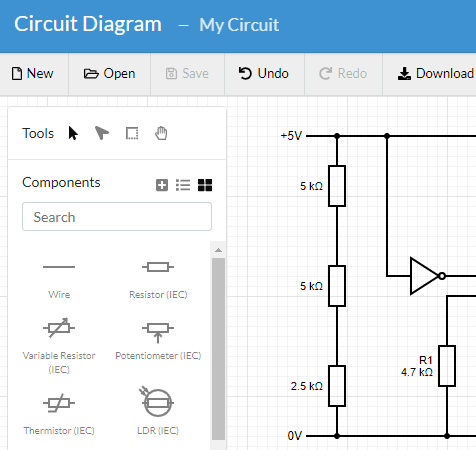

In fact, no non-linear lower bound is known for the circuit size of a concrete function. This proof was nonconstructive and proving bounds on specific functions is more difficult.

In an early paper, Shannon showed that most Boolean functions require exponential size circuits. However, to this point this effort has met with limited success. Largely because of many such implications for complexity classes, considerable effort has been devoted to proving circuit lower bounds. And so proving that some NP problem does not have polynomial size circuits would imply that P ≠ NP. That is, it is recognized by a circuit family which has polynomial size. Any language in P has polynomial size circuits. So, for example, we say that a circuit family has polynomial size if s( C n) is O(p(n)), for some polynomial p(n). We can measure the size and depth of circuit families using asymptotic notation. A nonuniform circuit family can recognize noncomputable sets. In this way a circuit family can recognize a language just as a Turing machine can.Ī circuit family is a nonuniform model, the function taking n to C n may not be computable. In order to consider circuits as recognizing an infinite set of strings, we consider circuit families which are infinite collections of circuits, C n, one for each input length. The depth, d( C), of a circuit C is the length of the longest path from an input to an output node.Ī circuit with n inputs can be thought of as a recognizer of a set of strings of length n, namely those which result in the circuit evaluating to 1. The size, s( C), of a circuit C is the number of gates it contains. The value of the circuit is computed in the natural way by giving values to the input variables, applying the gates to these values, and computing the output values. The nodes with out-degree 0 are called output nodes. In a circuit, the nodes of in-degree 0 are called input nodes and labeled with input variables. Aside from their practical value, such bounds are closely tied to important questions about Turing machine computations.īoolean circuits are directed acyclic graphs whose internal nodes (or “gates”) are Boolean functions, most often the “standard” Boolean functions, and, or and not. Circuit complexity studies bounds on the size and depth of circuits which compute a given Boolean functions. The properties and construction of efficient Boolean circuits are of practical importance as they are the building block of computers. Lance Fortnow, Steven Homer, in Handbook of the History of Logic, 2014 8.1 Circuit Complexity In the next section we investigate a couple of examples of Boolean circuits and their resources. This, coupled with its other desirable features, tells us that the Boolean circuit model is a good general model of parallel computation. That is, if a problem simultaneously requires p( n) processors and t( n) time to solve on some (uniform) model of parallel computation, then it simultaneously requires p( n) O(1) size and ƒ( n) O(1) depth to solve on a (uniform) family of Boolean circuits, and vice versa. The important point to observe here is that nearly all of the parallel models put forth have a polynomial equivalence with Boolean circuits in terms of their resource usage. There have been many parallel models proposed and many problems studied. The theory of parallel computation is yet another vast region of complexity theory. We will need the concepts of circuit family and uniformity when we define the parallel complexity class NC later in this chapter. This notion of uniformity has many desirable properties that may be investigated through the references. Logarithmic space uniformity is sometimes called Borodin-Cook uniformity. Encoding n in unary ensures that in the case of polynomial size circuits, the complexity is also logarithmic in terms of the length of the input. Note that the complexity of producing the description of α n is expressed in terms of the size of the resulting circuit, instead of the usual method of expressing it in terms of the input length. More specifically, for a function f: of Boolean circuits is logarithmic space uniform if the transformation 1 n → α ˜ n can be computed in O(lg(n + size( α n))) space on a deterministic Turing machine. Karchmer and Wigderson (1988) show that Boolean circuits and communication problems of a certain type are closely related. For example, a super-polynomial lower bound on the size of circuits for any function in NP would imply that P ≠ NP.

Proving “good” lower bounds on the size or depth of Boolean circuits is a long-standing open problem in computational complexity that goes back to Shannon (1948). Eyal Kushilevitz, in Advances in Computers, 1997 3.7.1 Boolean CircuitsĪ Boolean circuit is a circuit consisting of AND, OR, and NOT gates.


 0 kommentar(er)
0 kommentar(er)
